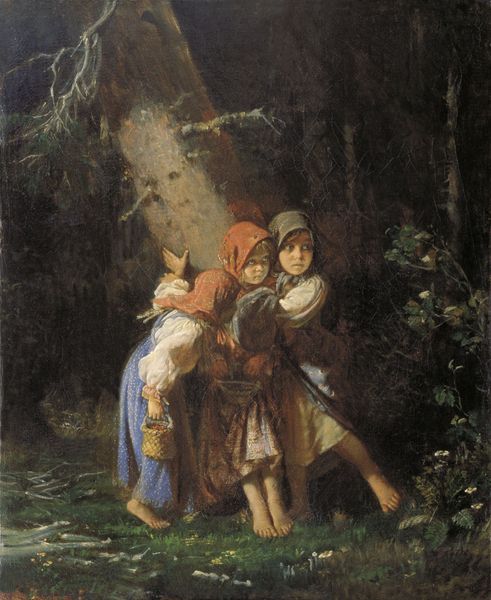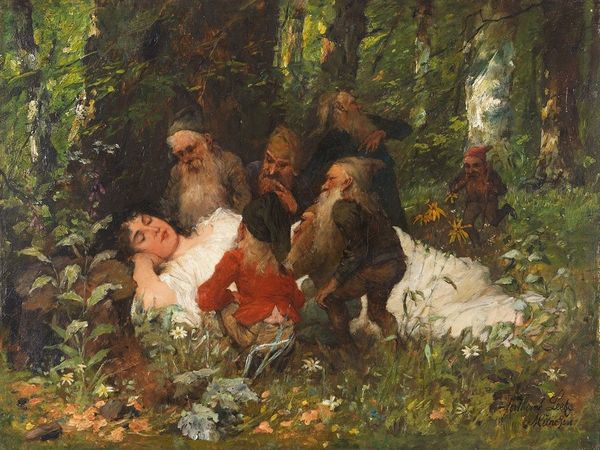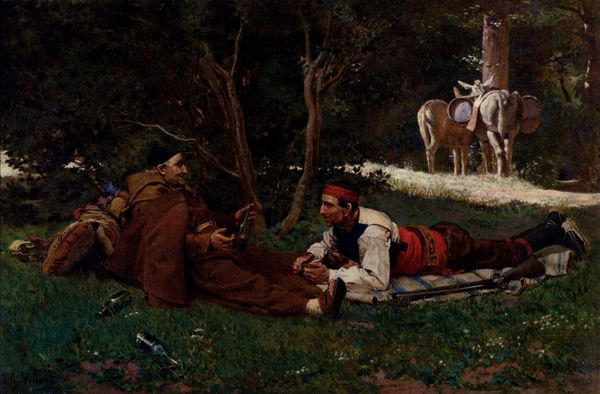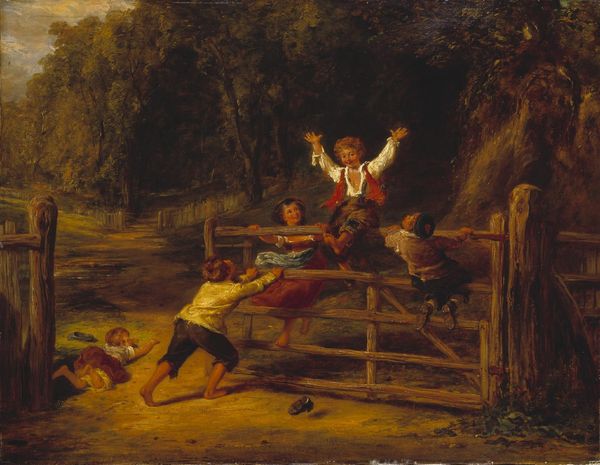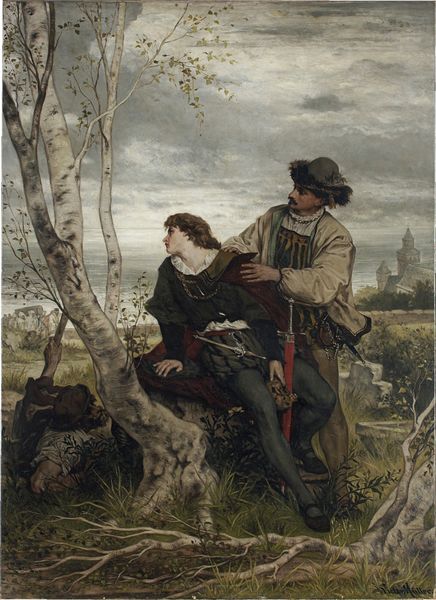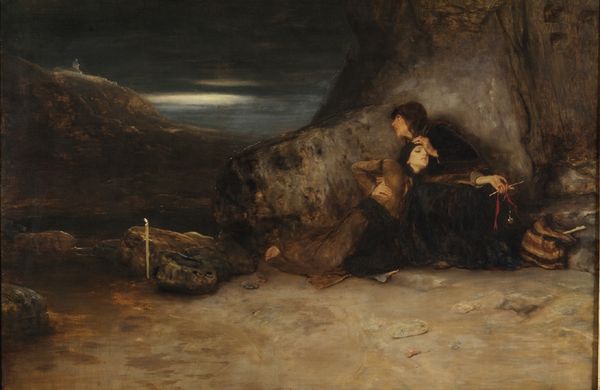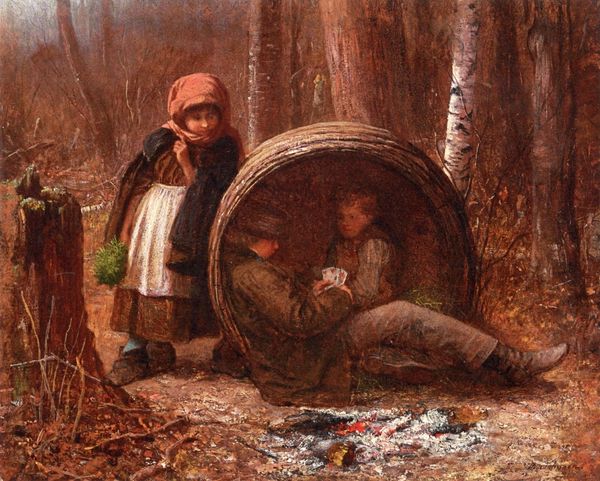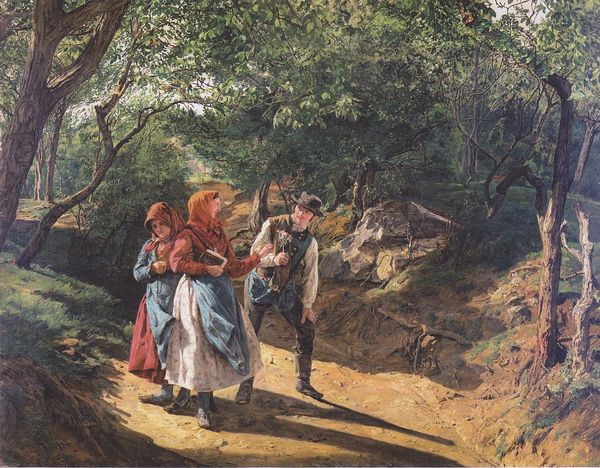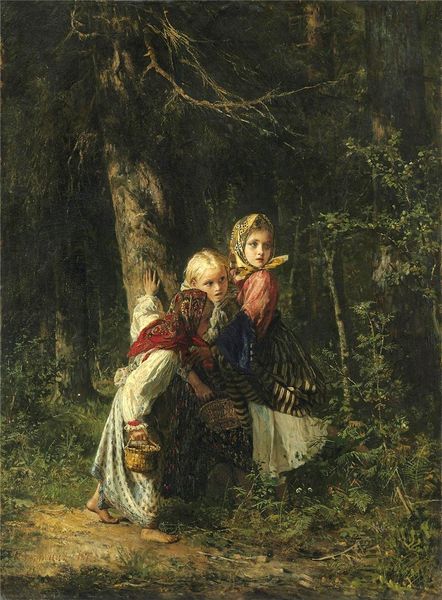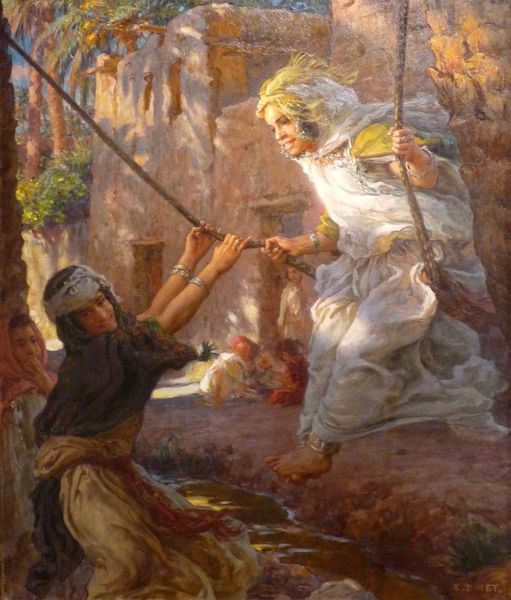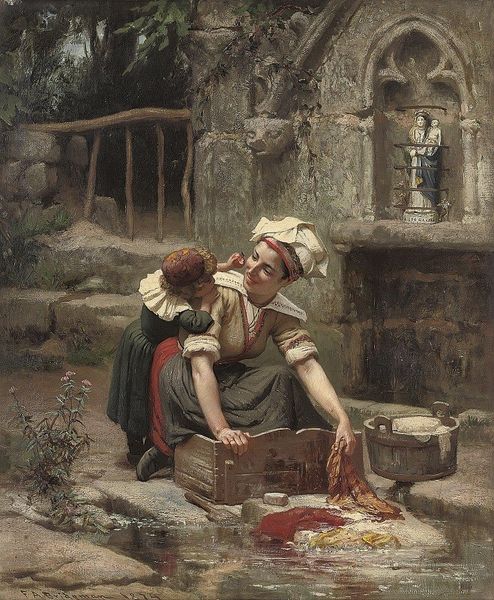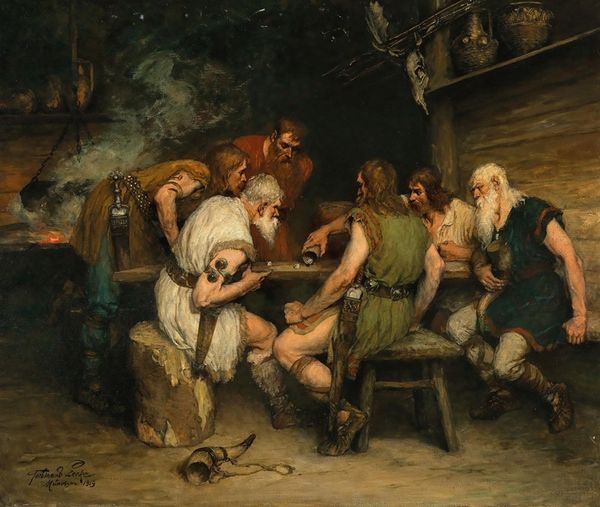
Dimensions: 83 x 126 cm
Copyright: Public domain
Curator: We are now viewing Vasily Perov’s painting, "Fowler," dating back to 1870. The work presents us with an elderly bird catcher, accompanied by a boy, carefully camouflaged amidst a forest landscape. Editor: My first impression is one of quiet stillness, of hushed anticipation. The earthy tones and dappled sunlight create a scene of remarkable tranquility and... calculation. I wonder what the artist means to communicate? Curator: Notice the rich impasto of the oil paint, especially in the rendering of the trees. Consider, too, the socio-economic realities: Perov, as a key figure of the Russian realist movement, often depicted scenes from everyday life, underscoring the hardships and realities of the peasantry. The means of production – their tools for capturing birds, are laid bare. Editor: Precisely! This pursuit itself speaks volumes. The bird, a recurring symbol of freedom and the soul, is here literally hunted and contained. The open cage lying discarded near the Fowler almost whispers an alternative—a tragic choice for the creature's fate. Curator: I agree, the implication of captivity and consumption cannot be overlooked. Yet it also invites us to examine our own relationship to nature. Bird catching as labor – as a source of livelihood. There's an element of necessity we must confront here, moving beyond sentimentality. Perov meticulously depicts their tools and garments, indicating a lived reality, an engagement with nature not as picturesque backdrop but as resource and livelihood. Editor: Indeed. And observe the visual relationship Perov establishes between the grandfather and grandson. The Fowler peers intensely towards the targeted bird. His grandson beside him looks upwards toward it, as though learning, or absorbing. A lineage. Curator: The legacy of environmental exploitation perhaps? Or the transfer of skills, of a means to survive? It certainly evokes more than simple genre painting – it asks us to reflect on intergenerational impacts, the cycles of production and consumption inherent in society. Editor: This prompts profound ethical questions doesn't it? It's an image teeming with cultural symbolism, speaking of nature’s bounty versus our rapacious nature. I’ll certainly leave contemplating that tense juxtaposition. Curator: Absolutely. A fitting close; thank you. By understanding the painting’s materiality and the processes behind its creation, we get a stark picture of how art represents our world and, importantly, invites us to engage with it thoughtfully.
Comments
No comments
Be the first to comment and join the conversation on the ultimate creative platform.
